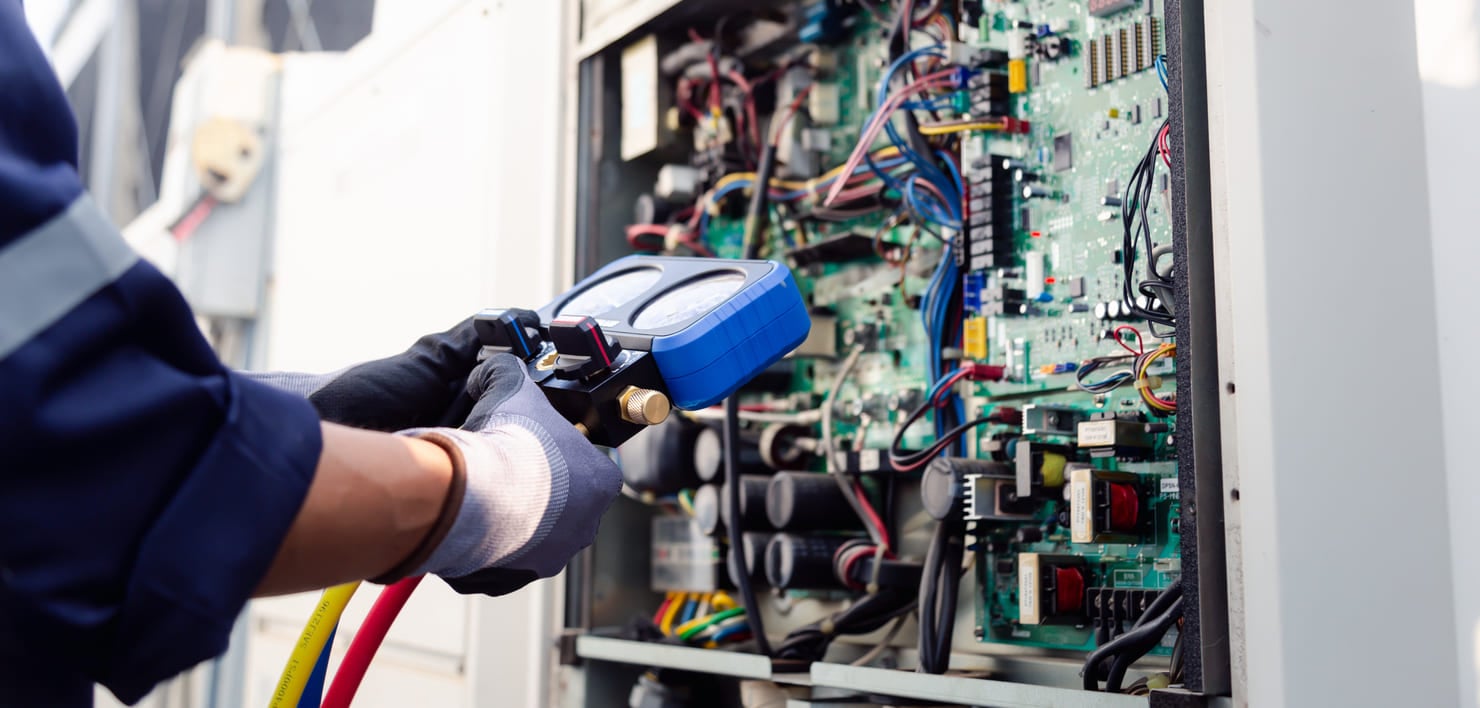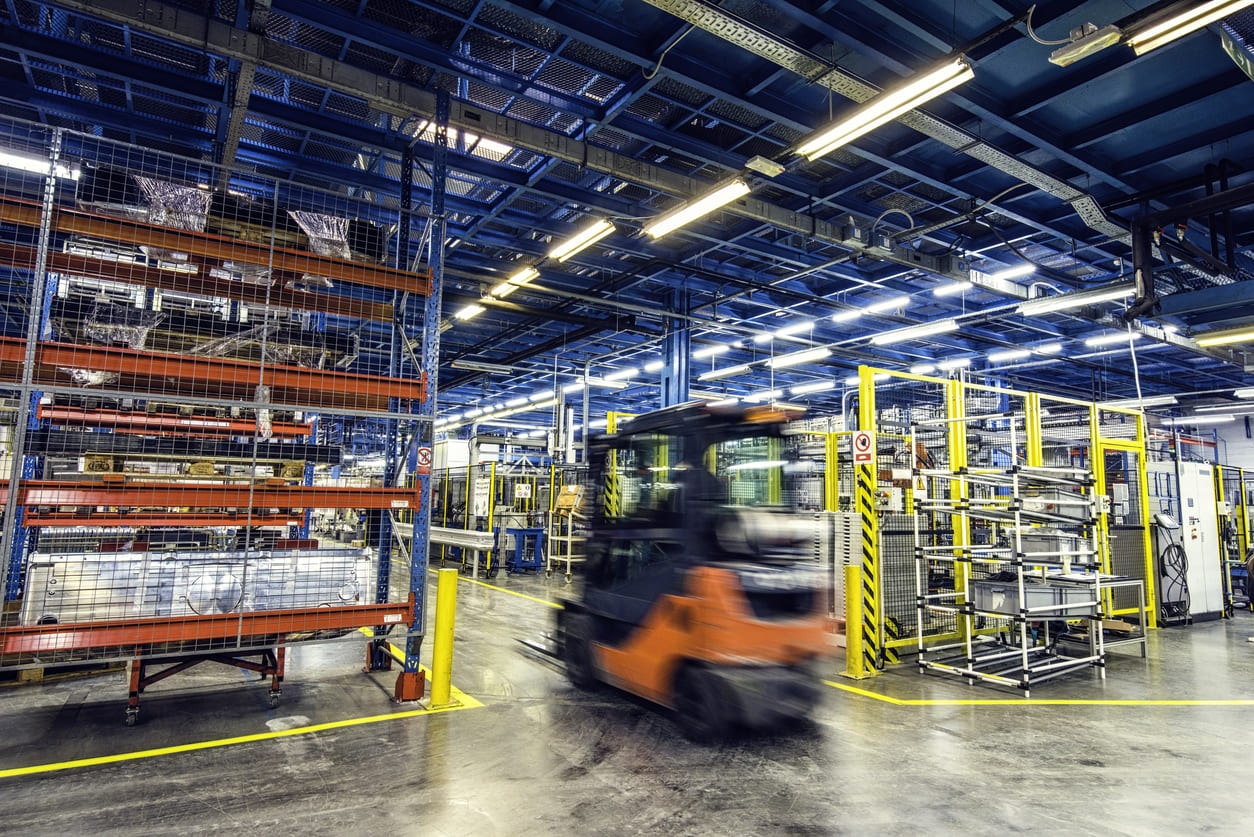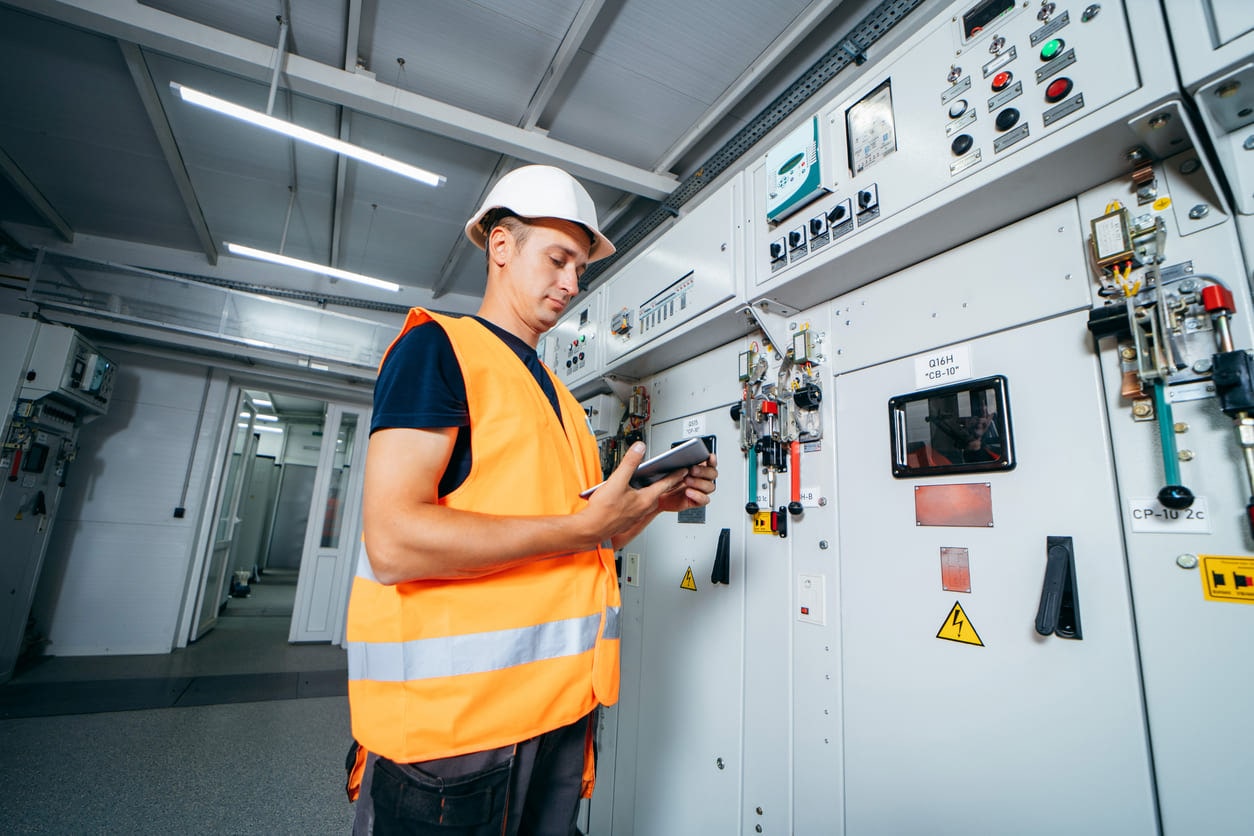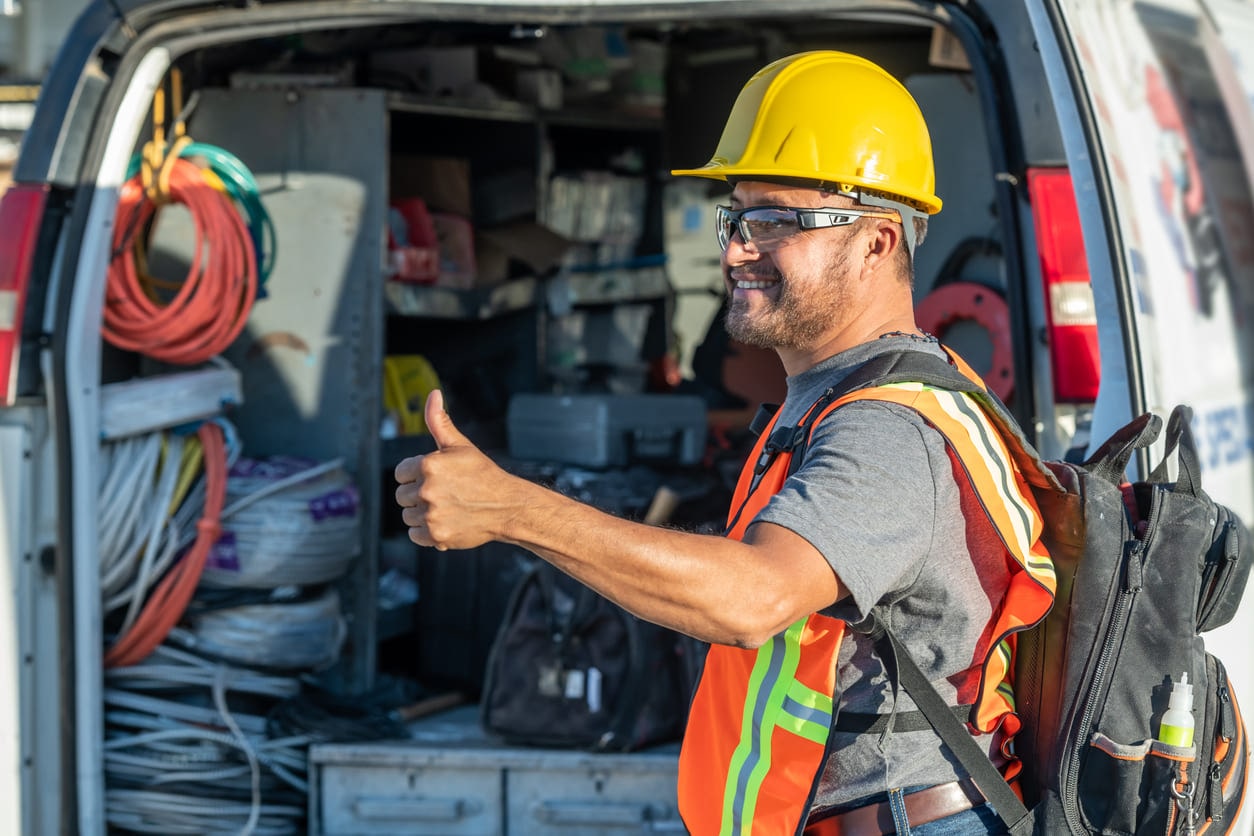Importance of Commercial Electrical Maintenance for Warehouses and Distribution Centers
Warehouses and distribution centres serve as the backbone of operations, ensuring that goods move efficiently from manufacturers to consumers. For these facilities to operate at a high level, they rely on different electrical systems to assist with tasks such as packing, sorting, or providing lighting to everyone in the area. But once one electrical system breaks down, it can lead to a multitude of problems. This is where warehouse electrical maintenance comes in to save the day.
Commercial electrical maintenance encompasses a wide array of services that safeguard the integrity of an entire electrical infrastructure. These services can include anywhere from routine inspections, timely repairs, and strategic upgrades to ensure that all electrical systems operate at peak efficiency and adhere to electrical safety standards.
In an environment that utilises heavy machinery and automated systems each day, the role of routine electrical maintenance can’t be understated. With the growing emphasis on sustainability and energy efficiency, electrical maintenance for warehouses and distribution centres will also require upgrades for better energy-saving solutions.
This blog will explain in-depth the different electrical systems found in warehouses, the challenges that come with maintaining high-power equipment, and different strategies you can utilise to enhance productivity and limit costly repairs.
What Is the Typical Electrical Setup in Warehouses and Distribution Centers?
The typical electrical setup in warehouses and distribution centres is designed to support a wide range of activities, from lighting and climate control to powering heavy machinery and automated systems.
Given the temperature variations throughout the year in Adelaide, an electrical maintenance checklist is a must to ensure all systems are well maintained the whole year round. For warehouses and distribution centres, these are the common electrical systems that require maintenance:
Main power supply
The electrical setup in a warehouse or distribution centre starts and ends with the main power supply. This supply is typically provided by the local utility company and enters the facility through a high-voltage connection, often ranging between 11kV and 33kV.
The main power supply then passes through a step-down transformer, which reduces the voltage to a usable level depending on the specific needs of the facility.
Switchgear and distribution panels
Once the main supply reduces the voltage to a usable level, it enters the switchgear— a collection of electrical devices that include circuit breakers, switches, and fuses.
The switchgear’s role in the electrical safety for warehouses is to distribute electricity safely throughout the facility. From here, the power is routed to various distribution panels or subpanels located strategically around the warehouse to distribute the electricity to different areas and equipment in the facility.
Lighting systems
The role of lighting in warehouses is straightforward… It ensures visibility for everyone inside. High-efficiency LED fixtures are typically the preferred option nowadays as they provide energy efficiency in warehouses compared to traditional incandescent bulbs.
Emergency lighting systems such as backup generators are also essential lighting systems in facilities as a power outage prevention strategy.
Machinery and equipment power
Warehouses and distribution centres often house heavy machinery and automated systems to improve efficiency such as conveyor belts, sorting machines, and robotics.
These systems have significant power requirements and are usually connected directly to dedicated circuits. Motors used in these machines are often powered by three-phase electricity, which provides a more stable and efficient power supply for heavy loads.
Power outlets and receptacles
As one of the more overlooked electrical systems in any facility, power outlets and receptacles play a critical role in warehouses and distribution centres. Rated for different voltage levels, using the wrong outlet to power any machinery or equipment can cause the conductors to overheat, leading to a fire hazard.
To ensure safety around the workplace, specialised outlets should be installed for specific machinery and equipment.
HVAC systems
While warehouses are typically high-ceiling facilities, heating, ventilation, and air conditioning (HVAC) systems are essential for temperature control and protecting sensitive goods.
Depending on the use of the facility, HVAC systems require substantial power requirements and are connected to dedicated circuits to ensure electrical system efficiency. Before you set up your HVAC system, consider the following factors:
- Number of people occupying the area at one time and how long
- Type of item stored in the warehouse
- Insulation around the area
Power Requirements of Different Electrical Systems

The power requirements of a warehouse or distribution centre depend on several factors, including the size of the facility, the types of equipment used, and the level of automation.
Typical power requirements can range from kilowatts (kW) to megawatts (MW). Read on below to learn the different power requirements of common lighting fixtures in Adelaide warehouses:
Machinery and equipment
Machinery such as conveyor belts, sorting machines, and pallet stackers can consume significant amounts of power, often requiring dedicated circuits and three-phase electricity. While the requirement will ultimately depend on the size and capacity of your structure, heavy machinery requirements can range from .5 kW to 5 kW.
HVAC systems
As one of the largest consumers of electricity in a warehouse, these systems can require hundreds of kilowatts to maintain optimal conditions.
Maintenance Challenges of High-Power Equipment
High-power equipment is integral to the operations of warehouses and distribution centres, playing a role in facilitating tasks involved in material handling, inventory management, and sorting to name a few.
When you consider the cost of purchasing these items and the hassle of transporting them to a warehouse, preventive electrical maintenance is crucial to paying cheaper fees when you need warehouse electrical maintenance.
Below, we’ll explore the typical challenges encountered by commercial electrician services to ensure the operational efficiency of high-power equipment commonly found in these environments.

1. Forklifts and other material-handling equipment
There are multiple components of a forklift beyond its electrical system that will warrant future challenges. For electric forklifts alone, maintaining battery health can involve doing tasks such as regular charging, checking water levels, and cleaning terminals.
Another challenge you can expect is its exposure to different environments. If forklifts are used in and out of the warehouse, they can be susceptible to dust, dirt, moisture, and vibrations. These elements can take a toll on its electrical components, leading to corrosion, contamination, and loose connections.
2. Conveyor systems
Even though you’ve invested in commercial electrical repair services, conveyor systems are no strangers to experiencing issues in their system from time to time. This machine is one of the most used equipment in any type of warehouse or distribution centre, making it susceptible to wear and tear.
Here are the following challenges and maintenance issues to expect from a conveyor system:
- Improper belt tension
- Lack of lubrication on seized rollers
- Constant change in temperature
- Pulley misalignment
3. Automated storage and retrieval system (AS/RS)
Due to the multiple moving parts involved in its system, over time these components can become misaligned, bent, or worn, reducing efficiency and increasing the risk of malfunctions.
Common parts of an AS/RS that experience challenges are the following:
- Sensors
- Bearings
- Driving system
- Grippers
- Lifting mechanism
- Rails
- Tracks
Since certain components of this system can be difficult to access, it’s best to find individuals who specialise in industrial electrical services to avoid any future pitfalls.
4. HVAC Systems
Due to the changing temperatures in Adelaide, your HVAC system will experience harsh weather conditions that will eventually cause it to break down. Some of the common issues that happen when HVAC systems aren’t routinely maintained by professionals who provide electrical equipment servicing are the following:
- Clogged filters
- Broken thermostat
- Leaking refrigerant
- Blower motor issues
5. Backup generator
While generators are only used during times of power outage, they do require maintenance to ensure their system is ready to provide power in case of emergency. Without routine industrial electrical troubleshooting, the following problems may occur:
- Battery failure
- Low coolant levels
- Emission issues
- Wet stacking
- Microbial build-up in the fuel
Preventive Maintenance Strategies for Electrical Systems in Warehouses and Distribution Centers
A well-executed preventive maintenance strategy helps to identify and address potential issues before they lead to costly repairs or accidents. Here are some electrical maintenance best practices that can be employed to keep electrical systems in optimal condition:

1. Regular inspections and audit
Regular visual inspections of electrical equipment are crucial to ensure warehouse electrical compliance. This involves a wide range of services such as checking for signs of wear and tear, corrosion, overheating, or physical damage. Key areas to inspect include electrical panels, wiring, outlets, lighting fixtures, and equipment connections.
Aside from regular inspections, periodic comprehensive electrical audits should also be conducted by qualified professionals. These audits involve detailed examinations of the entire electrical system, identifying any inefficiencies, potential hazards, and areas needing improvement. Due to the complex parts of electrical systems, it’s best to leave the inspection process to professionals to ensure the distribution centre’s electrical upkeep.
2. Thermal imaging
This is a valuable tool used for distribution centre electrical inspection. It uses cameras to detect hot spots in electrical systems that are not visible to the naked eye. The hot spots are found by detecting infrared radiation which is often an early indicator of potential failures or overloads. Regular thermal imaging surveys help identify these issues early, allowing for timely interventions.
3. Electrical testing
Routine testing of electrical systems, including insulation resistance tests, continuity tests, and circuit breaker performance tests, is essential to ensure that all components are functioning correctly and safely.
4. Component replacement and upgrade
Technology continues to innovate different processes every day, and the different electric systems in commercial establishments are no exception. One of the warehouse power system maintenance responsibilities of a qualified professional is to find ways to improve the efficiency of electrical systems. By having an option to upgrade your systems to something more modern, you can reduce energy costs.
5. Routinely clean electrical systems
Dust and debris can accumulate in electrical panels, outlets, and equipment, potentially causing overheating and malfunctions. Regular cleaning of electrical rooms, panels, and equipment is necessary to maintain proper airflow and cooling.
6. Lubricate moving parts
Electrical systems with moving parts, such as motors and generators, require regular lubrication to reduce friction and wear. Proper lubrication extends the lifespan of these components and prevents mechanical failures that could impact the electrical system.
7. Keep track of all your maintenance records
Maintaining detailed records of all inspections, tests, repairs, and upgrades is crucial for warehouse electrical maintenance. This way, you’ll have records that provide valuable insights into the electric system’s history and aid in planning future maintenance activities.
8. Be prepared in case of emergencies
If you have a generator, be sure to check its fuel levels and battery health regularly. Developing and regularly updating emergency response plans is also vital. These plans should outline procedures for dealing with electrical failures, including the roles and responsibilities of staff, evacuation routes, and communication protocols.
9. Pay attention to light levels
While LED bulbs are known to have a long shelf life, they do break down eventually. To avoid certain areas of a warehouse from lacking any lighting, be sure to regularly check for burned-out bulbs, flickering lights, or damaged fixtures.
A warehouse lighting maintenance technique to further extend the longevity of light bulbs is to install motion sensors in areas with low traffic to automatically turn off lights when not in use, but if you don't want to shut lights off completely, you can also choose dimming options in specific areas to adjust light intensity.
10. Adhere to electric standards
Ensuring that all electrical systems and maintenance practices comply with local, national, and international standards is crucial. While the regulations don’t update annually, regularly reviewing and updating maintenance procedures to meet the latest regulations helps avoid legal issues and ensure safety in the workplace.
By incorporating modern technologies, predictive maintenance techniques, and ensuring regulatory compliance, you can increase efficiency in the workplace and reduce maintenance costs. Prioritising preventive maintenance will not only protect valuable assets but also contribute to the long-term success and sustainability of the facility.
Should You Outsource or Have Someone In-House?
When it comes to managing electrical maintenance in warehouses and distribution centres, businesses face the crucial decision of whether to outsource these services or handle them in-house. Both approaches have their own set of pros and cons as you’ll learn below.

Pros and cons of outsourcing electrical maintenance
PROS:
1. Access to Expertise
Outsourcing electrical maintenance allows businesses to tap into a pool of specialised knowledge and experience. Electrical maintenance firms employ highly skilled technicians who are trained to handle a wide variety of electrical systems and issues. This expertise can lead to faster problem resolution and better overall system performance.
2. Cost-effective
While it’s nice to have someone ready to tackle any electrical system that happens, outsourcing can often be more cost-effective than maintaining an in-house team. Companies save on costs related to recruiting, training, and retaining specialised staff.
3. Follow the latest technology and industry practices
Professional electrical maintenance companies are often at the forefront of industry advancements. As their main source of income, these companies are always looking to invest in the latest tools, technologies, and training to give them an edge over their peers.
4. Keeps your business flexible
Outsourcing your electrical maintenance allows you to only spend money when needed. As business demands fluctuate, companies can scale maintenance efforts up or down without the logistical challenges of managing in-house staff.
CONS:
1. Loss of Control
One of the main drawbacks of outsourcing is having lesser control over the maintenance process, leading to possible communication issues.
2. Dependency on External Providers
Relying on an external firm can create dependency, and if the provider experiences issues or fails to deliver as expected, it can impact the company’s operations.
Pros and cons of hiring in-house electrical maintenance
PROS:
1. Direct control
An in-house electrical maintenance specialist allows you to maintain direct control over processes and can choose to prioritise tasks based on your specific needs. This can lead to more tailored and responsive maintenance practices.
2. Faster response time
This is the biggest benefit of hiring someone in-house. A team can respond to issues more quickly as they are already on-site and familiar with the facility’s specific requirements and systems.
3. Customised training
In-house staff can be trained specifically to become an expert in certain areas. This ensures that they have a deep understanding of the facility’s unique electrical systems and needs.
CONS:
1. Higher costs
If your electrical systems are well maintained, maintaining an in-house team can be significantly more expensive. Costs include salaries, benefits, ongoing training, and investments in tools and equipment.
2. Limited training and certifications
Unless you’re willing to shoulder the payment to have your in-house electrician undergo seminars and training, the information and knowledge they have will be limited compared to electrical contractors.
3. Limited availability
If your electrical issue occurs outside working hours or on weekends, you'll have limited options with an in-house electrician, leading to delays in resolving critical issues.
Final Thoughts
Routine electrical maintenance in warehouses and distribution centres is vital to ensure the space is safe and always ready to use. While in-house management offers direct control and quick response times, outsourcing presents a compelling case with its access to specialised expertise, cost-effectiveness, advanced technology, flexibility, and regulatory compliance.
If you need help making sure all your electrical systems function to their highest capabilities, Electric Results is a name you can trust.
